I have this in line:
<div class="blue-car">
<a href="#">Car</a>
</div>
<div class="iColor">
<a href="#">Blue</a>
<div>
.blue-car:hover { color: red; }
.iColor:hover { color: read; }
I would like to make when someone hover to Car div second div which iColor change css and when hover to iColor div blue-car change css.
ie. I hover to 'Car' , 'Blue' will change color to red and when I hover to 'Blue' , 'Car' will change color to red, I want to make people aware that this two link is related.
I would love to have this in css only. No jquery. I have tried many no achievement at this moment.
Let me clear this, here is an example on this site. You could see when you hover to a country map, css link on right side will change, and you could see when you hover to a country link, country map css will change. This means this two div work each other. How they do this on this site: http://www.avito.ru
